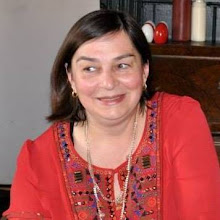This is the question at the heart of Stephen May’s TAG, the novel that was shortlisted for the Wales Book of the Year before going on to win the Media Wales Readers’ Prize as the one most readers thought should have won. How should teacher Jonathan Diamond see his difficult pupil Mistyann, and how should he behave towards her? Politically correct answers become more difficult when he has to travel alone with her to an isolated manor house in North Wales for a special course aimed at helping Talented and Gifted children.
From the start May lets us know things are going to go wrong: we’re just waiting to see how badly he could fall, or if it might all be a comedy of errors. We know Diamond has ended up in disgrace, so we’re with him at every moment hoping that he won’t do anything too drastic, and for a middle-aged man alone with a precocious teenager that’s nerve-wracking. At forty-one, and almost good-looking with some sort of resemblance to Tom Cruise, he’s obviously not of the right generation to be a friend to Mistyann. But he’s a recovering alcoholic who could be stressed into taking a drink and he was also gifted in his youth, a musician who underachieved, so his empathy is with her rather than with the other staff. He’s noncomformist enough to identify more with Mistyann than the system and the rules of behaviour that could protect them both.
The characters are drawn so vividly that readers will remember them as real people they watched through this darkly comic drama. It’s not surprising to find that May is also a playwright, and he has obviously studied teenagers to create Mistyann and the others on the Talented and Gifted residential course. The chapters are written in first person narrative alternately by Diamond and Mistyann, and it’s quite an achievement how May can make us believe it’s a 15-year-old girl talking. She’s no Lolita, as teenagers in this millennium happily call out ‘perv’ or ‘paedo’ at the first sign of any suspect behaviour, and in this book they often do.
While Diamond bungles step-by-step towards the court scene we hear about in the early chapters, we meet more characters drawn with the playwright’s penetrating vision of human behaviour. The American ed-psych guru Ariel La Rock is almost too easy a target, and the couple running manor are beautifully brought to life – the feeble and boyscoutish Ray who has brought back a feisty Asian wife called Susie from extensive travels where he was ‘finding himself’.
It’s not easy to write well about teenagers, and the other students invited on the course are as believable as Mistyann. Clearly chosen for politically correct criteria rather than for purely academic reasons, they include the selection of races and the boy in the wheelchair that might mark them out as the ‘right sort of characters’ for an all-inclusive children’s book these days. As they get to know each other teenage sex is soon on the agenda and, again, May manages to write these scenes incredibly well. Being explicit while still avoiding the pitfalls is a challenge and it takes a brave writer to confront it.
Bringing teenage sex in also raises more discussions, such as why we should consider Mistyann a child but still feel it’s right and normal for the kids to have relationships between themselves. The lovelessness of these relationships is also moving and made me step away from the book to think about our society – and I love it when a book makes me take time aside to meditate on the themes. Another question is about why it feels so troubling that Diamond is at risk of overstepping the boundaries with Mistyann, while somehow it’s just comical if a young female teacher gets involved with a teenage boy.
There’s so much more in TAG: the family Mistyann comes from with the serial relationships of her mother and the way responsibility for looking after the children and cooking has fallen to her. There’s a whole vision of the way we’re expecting teenagers to live today, not to mention the confusion of the adults. May never comments on any of this: he just brings it to life and different readers will draw different conclusions to me, but it will make all readers think.
Is a 15-year-old girl a child? Yes, she is, even though the explicit sex and the risk of pregnancy show she’s old enough to be a mother, and she’s also a better mother than her own one as we can see when she looks after her siblings. Are most men attracted to 15-year-old girls as a group of highly intelligent men in a book discussion group told me recently? Possibly. If so May is brave in revealing this when he does cross that line at times to show us what Diamond finds himself thinking, almost despite his conscious decisions. May pushes the boundaries of what’s acceptable in this novel, in a way that few novelists do when talking about underaged characters. But sometimes you have to push that boundary to raise the discussion of how we should look after these children. The portrayal of how good a teenage mother could be was also welcome.
Subscribe to:
Post Comments (Atom)







This is very interesting and looks like a must read.
ReplyDeleteIt raises a highly controversial and interesting subject, 50 years or more after 'Lolita' (who was actually a few years younger, in an age when girls matured later).
ReplyDeleteInteresting..
ReplyDelete